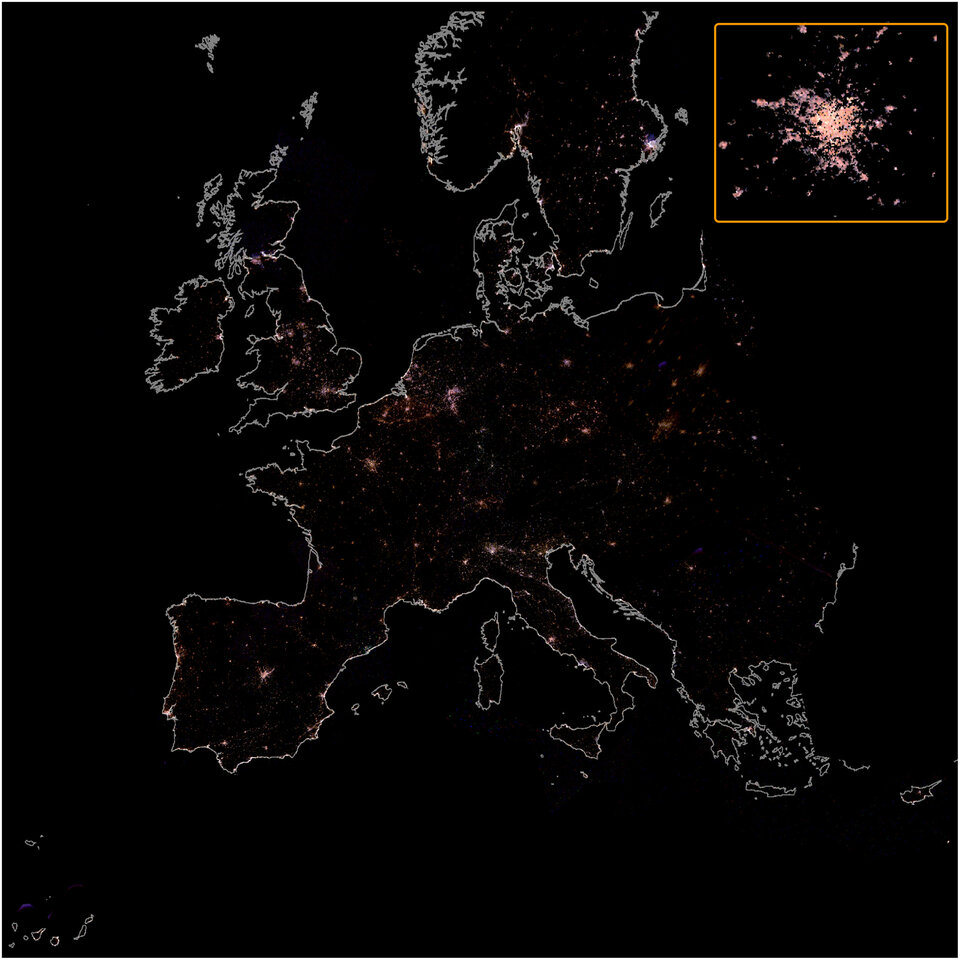The first colour map of Europe at night, created using images from the International Space Station ISS, shows a sharp increase in light pollution, not only due to more lighting but to the last decade's new LED lighting technology, reports the European Space Agency (ESA) in a press release.
Over the past two decades, European astronauts took more than a million pictures of Earth at night using digital cameras to demonstrate the true extent of light pollution. A comparison shows a clear increase in lighting pollution in urban areas, and a shift towards whiter and bluer emissions due to the now widespread use of diode lamps, or LED technology.
"As seen from space, the resulting image looks like a cancer scan or a fluorescent spider’s web that keeps growing," said Alejandro Sánchez de Miguel, a research fellow at the UK’s University of Exeter. His recent paper highlights how invasive night lights are and underlines their negative effects on the environment.

Colour map of Europe at night in 2022. Credit: ESA/NASA
As many European countries are turning off their lights and hundreds of monuments and public buildings are no longer illuminated at night in an urge to save energy in light of the sky-high prices, scientists are warning that this change should not only be about reducing bills: brighter nights are disrupting the night cycle for humans, animals and plants.
The switch to white and blue light radiation disrupts the natural day and night rhythms of living organisms, with negative effects on the health of species and ecosystems. "When we turn the streetlights on, we deprive our body of the hormone melatonin and disrupt our natural sleep pattern," said Alejandro.
Related News
- Brussels to halve number of Christmas lights this year
- Climate-proofing Brussels calls for greater investment
- 'Very dangerous': Safety concerns for Brussels plan to switch off morning street lights
The research, in particular, points to this suppression of melatonin (often called the sleep hormone), disruption of the phototaxic response of insects and bats (their ability to move according to a light source) and the reduced visibility of stars in the night sky.
(continues below photos)

Paris in 2012 (left) and in 2022. Credit: ESA/NASA

London in 2012 (left) and in 2022. Credit: ESA/NASA

Madrid in 2012 (left) and in 2022. Credit: ESA/NASA

Milan in 2012 (left) and in 2022. Credit: ESA/NASA

Berlin in 2012 (left) and in 2022. Credit: ESA/NASA
However, the changes vary per country and reflect different systems and policies when it comes to lighting the streets. While there has been a marked increase in light pollution in Italy and the UK, Germany and Austria show a less dramatic change in spectral emissions. Still, Germany’s glow is whitening, and the country has a lot of fluorescent and mercury vapour lights still in use.
"By the end of this decade, all Europe could look white from space," said Alejandro. On the warmer side of the spectrum, Belgium shines in deep orange due to the widespread use of low-pressure sodium lights, and high-pressure sodium lights make the Netherlands emit a golden glow.

